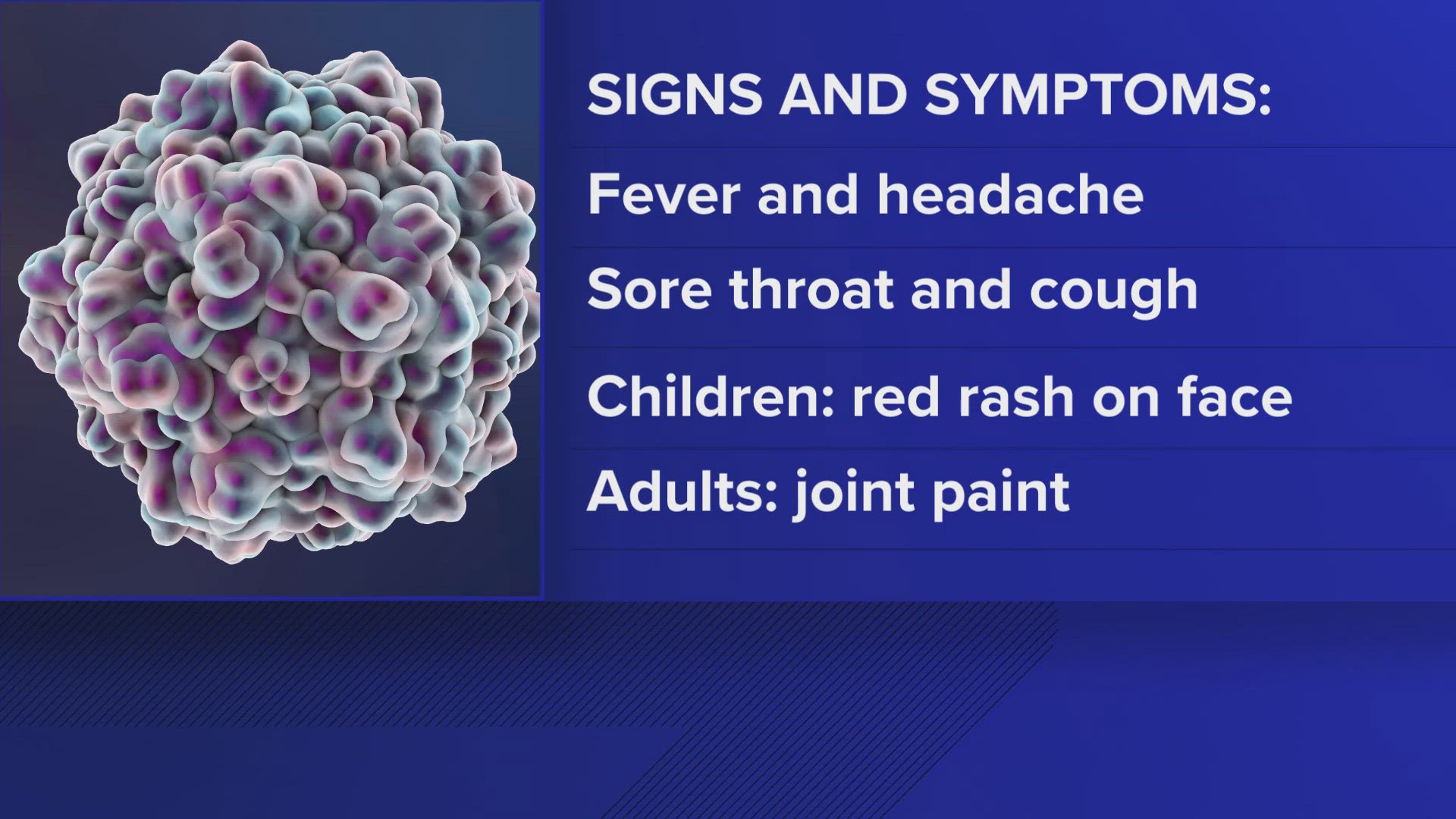WASHINGTON — The Centers for Disease Control and Prevention (CDC) has issued a health advisory over rising cases of human parvovirus B19 in the United States.
According to CDC data, human cases of parvovirus have increased from less than three percent during the years of 2022–2024, to 10 percent in June 2024. The greatest increase was observed among children aged 5–9 years old, with cases rising from 15 percent during 2022–2024 to 40 percent in June 2024.
While many pet owners may be familiar with the disease's deadly impact on dogs, the human virus works differently. Here's what you need to know:
What is parvovirus B19?
The CDC describes human parvovirus as a seasonal respiratory virus that is transmitted through respiratory droplets. The virus is highly transmissible and can be spread by people with symptomatic or asymptomatic infection, although symptoms usually remain mild in healthy individuals. Those who work in close contact with children, such as teachers and day care workers, are more susceptible to infection.
What are the symptoms of parvovirus B19?
According to the CDC, the most common symptoms start within three days to three weeks of infection and can include fever, headache, sore throat and cough. This is the most susceptible phase of the infection, during which the virus is most likely to be transmitted to others.
That initial phase may be followed by a "slapped cheek" red rash presenting primarily in children, and joint pains in adults. These symptoms usually develop within a week of infection — after the initial flu-like phase — and patients are typically not contagious during this phase. The rash may develop on the face or body, and while it usually goes away in seven to 10 days, the CDC warns it may come and go for several weeks. The joint pain usually lasts one to three weeks but may last for months or longer. It usually goes away without any long-term problems.
How dangerous is parvovirus B19?
Parvovirus remains mild among healthy people but may have more serious consequences for pregnant or immunocompromised individuals. It can cause serious health complications affecting the nerves, joints, or blood system. It may also cause miscarriage. Pregnant and immunocompromised individuals are encouraged to see a health care provider if they suspect a parvovirus infection.
How is parvovirus B19 treated?
Parvovirus B19 infections are usually mild and will go away on their own. The CDC says children and adults who are otherwise healthy usually recover completely. It is diagnosed using a blood test which also determines if you are susceptible or possibly immune to infection, or if you were recently infected.
Treatment usually involves managing symptoms like fever, itching, and joint pain, and swelling. Some patients who develop a low blood count may need supportive care, blood products, and other specialized therapies.
How can I prevent parvovirus B19?
The CDC recommends certain general respiratory precautions to prevent the spread of parvovirus B19 and similar respiratory viruses. People at higher risk of severe parvovirus B19 may also consider using additional prevention strategies, such as masking in public and around others presenting symptoms.

